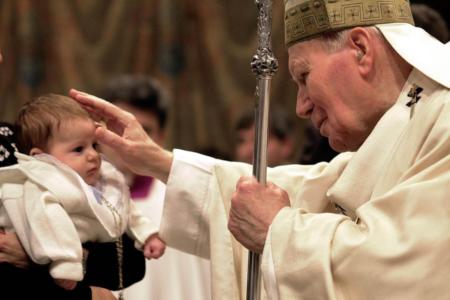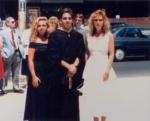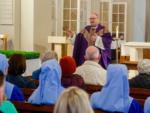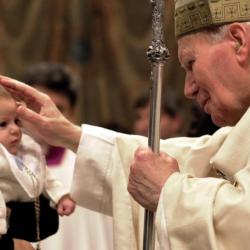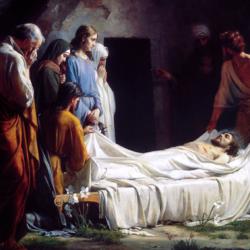The Sisters of Notre Dame de Namur expand into the Merrimack Valley
Celebrating 175 years of the Sisters of Notre Dame de Namur in New England: An enduring legacy of goodness
Sisters of Notre Dame de Namur in New England -- The early years
Sisters of Notre Dame de Namur 175th anniversary: Growth in Lowell and into Tyngsborough
Notre Dame Academy from Roxbury to Hingham
Sisters of Notre Dame de Namur 175th anniversary: 'The Lake' land use changes but remains a haven for those in need
Sisters of Notre Dame de Namur 175th anniversary: Emmanuel College -- Mission made manifest
Within a decade after the Sisters of Notre Dame de Namur arrived in Boston in 1849, they established a presence in Lawrence, in the Merrimack Valley, dedicating their lives to educating, praying, and sharing God's goodness among the people. This new city was carved out of farmland purchased from neighboring towns and created in 1853 as one of the experimental industrial cities with labor provided by immigrants who dug out the canals, built the mills, and worked the factory machines. These massive mill buildings lined the Merrimack River, where the flowing water provided power for the devices that produced cotton and woolen textiles.
The pastor of St. Mary in Lawrence was Irish immigrant Father James O'Donnell. He heard the sisters had recently arrived from Ohio to the convent at St. Patrick in nearby Lowell to rest before coming to Lawrence. His arrival by horseback with a coach on Aug. 20 surprised the five sisters, and he refused to leave without them accompanying him immediately. They set out for the Lawrence convent he had set up, which the local newspaper described as "a ramshackle Noah's Ark." A crowd surrounded the convent, waiting to greet the new sisters even though it was already 9 p.m. The sisters took charge of 300 grammar school girls, work started by local women volunteers who continued to assist the sisters and started a high school and a Sunday school for girls already working in the mills. The sisters were known as "friends of the poor" and shared their charism that "God is good." Johanna Coughlin of Lawrence entered the order within a year, and many more soon followed.
Father James died unexpectedly, and Augustinian priests were assigned to Lawrence's St. Mary and Immaculate Conception parishes. The two religious orders of sisters and friars spread their work across the city and beyond. The sisters began religious instruction for the children of St. Laurence O'Toole, a mission of Immaculate Conception. They started a new grammar school in the basement of the parish church in 1890. St. Mary opened another grammar school for young children unable to walk the distance to St. Mary and named it St. Rita in 1902. The Augustinians served the small minority Catholic community in Andover, and the sisters provided religious education. It eventually became St. Augustine Parish in Andover, which opened a grammar school there in 1914. In 1916, the Immaculate Conception Parish Church was moved. A new Parish of Holy Rosary opened for Italian Immigrants at the site. St. Augustine on Tower Hill in Lawrence eventually became its parish, with a grammar school opened in 1921 so the children and sisters would not have to walk the hill to St. Mary.
It was an exciting time of expansion. The Sisters of Notre Dame de Namur collaborated with the Augustinians to serve the Catholic community. After opening a grammar school, religious education program and high school for girls at St. Mary, they opened five more grammar schools within 31 years! In each place, the sisters had established religious education for children before the schools began. The outreach was also extended to neighboring towns. The Sisters of Mercy transferred the school they staffed at St. Michael Parish in Exeter, New Hampshire, to the SNDdeN in 1951. St. Monica in Methuen was originally a mission of St. Mary in Lawrence. A church was built in 1897, and it became an independent parish in 1917, with the sisters teaching religious education to the children. The school there began with two grades in the parish hall in 1958 until a new school opened in 1959 in a former private park owned by Edward Searles. It was three floors of classrooms with a new grade opening each year. The sisters lived in the third-floor classrooms along with sisters commuting to St. Joseph School in Salem, New Hampshire, until convents were provided for them beside both schools.
Unfortunately, many schools are no longer open as the communities' finances and needs have changed. St. Mary High School for girls, which served in Greater Lawrence, closed in 1996 when nearby Central Catholic School for boys went co-ed. The area sisters conducted a needs assessment and learned there was a great need for adult immigrant education to teach English, prepare for citizenship, and offer job skills for working in the U.S. to provide for their families. Notre Dame Education Center-Lawrence (NDEC) began at the former St. Mary High and added a Certified Nursing Assistant (CAN) program. NDEC was transferred to the Riverwalk Mill when the sisters re-opened a high school named Notre Dame Cristo Rey at the former St. Mary High.
Many thousands of residents of Greater Lawrence have been affected by the ministry and relationships with countless sisters since their arrival in the Merrimack Valley in 1859. Sisters have continuously lived in Lawrence over these many years, and currently, there are seven in residence and three more sisters living in Andover. God has been good to all and blessed these 165 years in the Merrimack Valley.
SISTER EILEEN BURNS, SNDDEN, IS A MEMBER OF THE LEADERSHIP TEAM OF SISTERS OF NOTRE DAME DE NAMUR'S U.S. EAST-WEST PROVINCE. SHE LIVES IN COMMUNITY IN LAWRENCE, WHERE THE SISTERS HAVE CONTINUOUSLY LIVED AND MINISTERED SINCE 1859. SHE HAS TAUGHT IN SCHOOLS, BEEN A PASTORAL ASSOCIATE IN BOSTON ARCHDIOCESAN PARISHES, AND WORKED AT THE NOTRE DAME EDUCATION CENTER-LAWRENCE.
